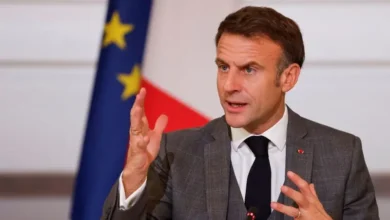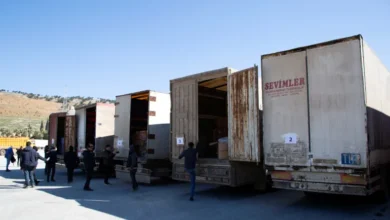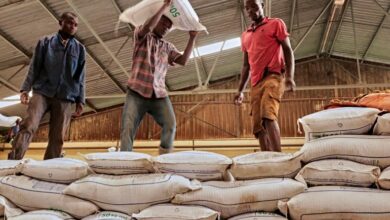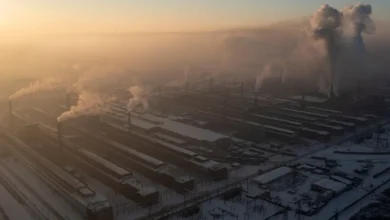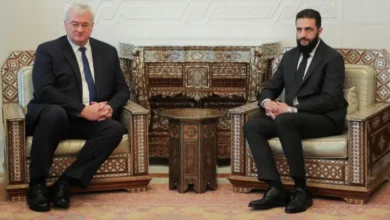Russia continues to step up assault on Ukraine with missile barrage

Russia has maintained its recent intensification of air attacks on Ukraine as it unleashed a huge overnight assault.
Hundreds of Russian missiles and drones struck the capital, Kyiv, and Kharkiv on Tuesday. The intensified attack on the country’s two largest cities came just a day after Russian President Vladimir Putin pledged to exact “revenge” for a deadly assault on the Russian city of Belgorod.
However, the Russian strikes follow a trend that has seen it escalate its air attacks on Ukraine in recent days. With the front line largely bogged down in trench warfare, Moscow has returned to its tactic from last winter, during which it targeted infrastructure, especially energy and heating, leaving millions of Ukrainians struggling to stay warm.
That has seen a hike in civilian casualties amid numerous strikes in urban areas. Following Tuesday’s attacks, Russia’s Ministry of Defence claimed that it had destroyed all “military-industrial” installations targeted.
President Volodymyr Zelenskyy said four people had been killed and at least 92 injured in Tuesday’s attacks, noting that Russia had launched about 170 Shahed attack drones and dozens of different missiles at Ukraine since the last day of 2023.
Russia, he said, would “answer for every life taken away”.
Ukraine struck back shortly afterwards, sending four Alder MLRS missiles towards Belgorod. All were intercepted by Russian forces, according to regional Governor Vyacheslav Gladkov. Local authorities reported that one person had been hospitalised.
“For the third day already, our air defenders are doing incredible work,” Zelenskyy said on Telegram messenger.
“This is one of the most extensive strikes on the capital,” said Al Jazeera reporter Assed Baig from Kyiv. “We understand there are parts of the city without electricity and mobile connection.”
The attacks on Kyiv came during peak hours. Sirens rang through the city as rescue services rushed to areas hit by debris from missiles downed by Ukraine’s air defence systems.
‘Terrorist attack’
The latest escalation in the war began late on Thursday, when Russia launched a drone and missile attack across Ukraine, killing at least 31 and injuring about 160 people. The Ukrainian forces said they had never seen so many locations attacked simultaneously.
On Saturday, Ukraine shelled the border city of Belgorod. Russia said more than two dozen people had been killed, including five children, in the shelling. Ukraine’s officials have not accepted responsibility for a series of strikes on Russian territory.
Describing the assault on Belgorod as a “terrorist attack”, Putin pledged to mete out punishment during a visit to a military hospital on Monday. By this point, Russia had already rung in the new year by launching a record 90 Shahed-style drones towards Ukraine.
Most of the drones were downed by Ukrainian forces, but five people were reportedly killed and eight injured in the Black Sea port city of Odesa.
In his New Year speech on Monday, Zelenskyy, who is struggling to secure increased support from the United States and the European Union, promised to raise Ukraine’s production of weapons. The country will build at least a million drones, he said, promising Russia will face the “wrath” of it.
The increased intensity of the war could yet help Ukraine’s drive to convince its partners of the dangers posed by Russia and the need to send more funding and weapons.
Following Tuesday’s attacks, Kyiv reiterated its desperate need. Ukraine’s Ministry of Foreign Affairs issued a statement urging faster supplies of air defence systems, combat drones, and long-range missiles.
Foreign Minister Dmytro Kuleba called on European allies to cease contact with Russian diplomats and to transfer frozen Russian assets to serve Ukraine’s needs.
Amid Tuesday’s barrage, Poland, which last week reported that a Russian missile had briefly passed through its airspace, said it had mobilised two pairs of F-16 fighter jets and an air tanker. Later, the planes returned to the base, judging that the threat had diminished.
